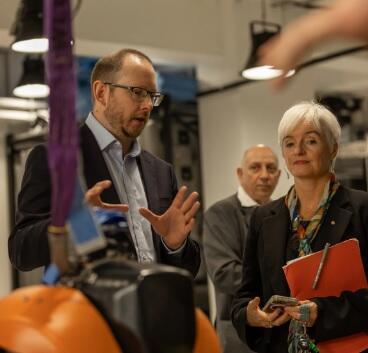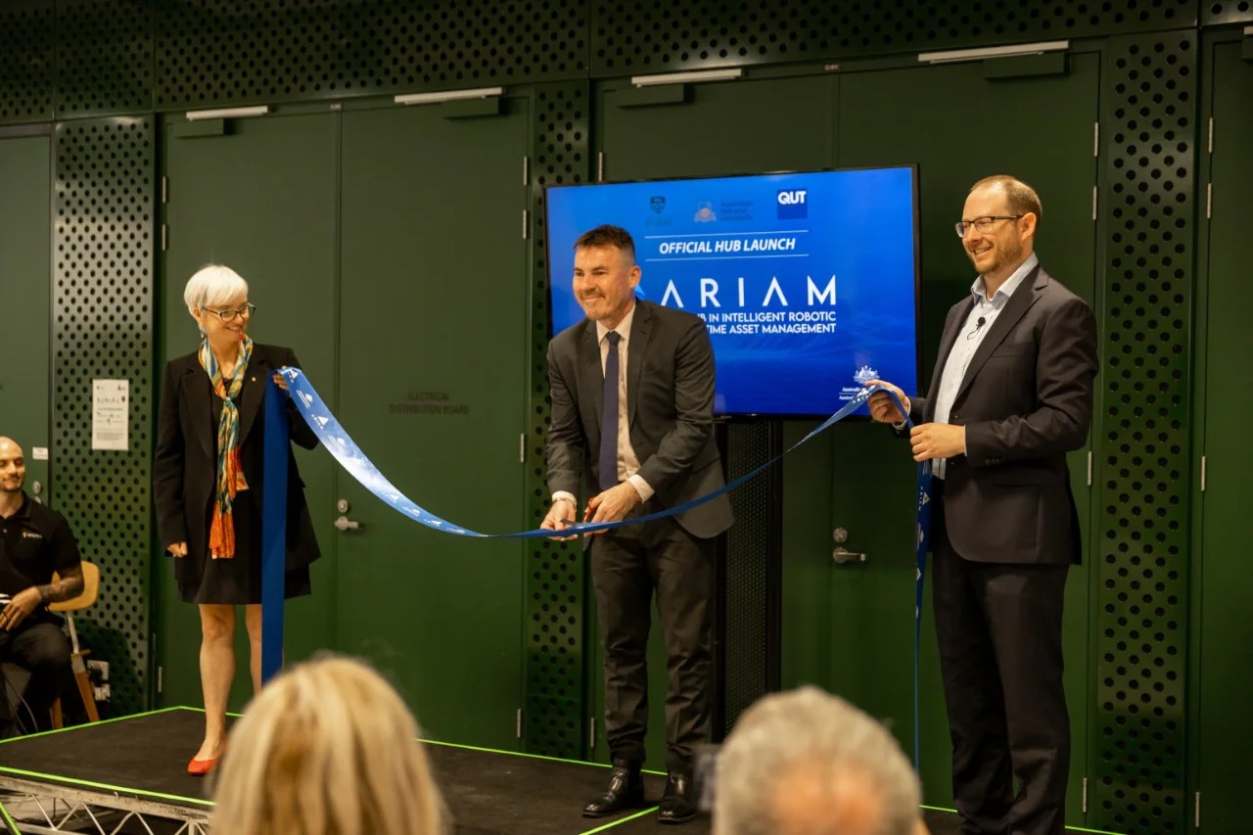ARIAM’s groundbreaking efforts are set to revolutionise asset maintenance, specifically in high-risk environments like tunnels and underwater infrastructure.
By deploying cutting-edge technology, ARIAM aims to mitigate the need for human intervention in these perilous locations. Furthermore, their work is poised to address the impending “infrastructure cliff,” where a plethora of post-World War II infrastructure assets are nearing the end of their lifespan.
ARIAM, hosted by the University of Sydney in collaboration with Queensland University of Technology and The Australian National University, serves as an ARC Research Hub.
The hub brings together a distinguished team of experts in field robotics research and development, encompassing academia, government, and industry.
One of the key outcomes of ARIAM’s endeavors is the facilitation of precise and timely data collection. This, in turn, will not only bolster safety but also minimise disruptions during maintenance activities. Consequently, the overall efficiency of the industry is expected to witness a remarkable boost.
Leading the charge at ARIAM is Professor Ian Manchester, a distinguished figure in the field of aerospace, mechanical, and mechatronic engineering. He also serves as the director of the prestigious Australian Centre for Robotics.

Under his guidance, the ARIAM research team is embarking on the development of semi-autonomous and autonomous machines, specially designed to inspect and maintain intricate structures in the most challenging of environments.
Through these innovations, ARIAM is on a mission to eliminate the necessity for individuals to venture into hazardous or dangerous locations.
According to Professor Manchester the initiative marks a significant leap forward for robotics and will change the way industry operates.
“With new designs we can eliminate the risk of injury associated with manned operations to inspect remote or dangerous areas, such as tunnels or underwater infrastructure, and enter previously inaccessible areas.” he said.
Professor Stefan Williams from the Australian Centre for Robotics and School of Aerospace, Mechanical and Mechatronic Engineering says Australia faces a critical situation, with many of its post-World War II infrastructure assets rapidly approaching the end of their 50 to 80-year lifespan.
“This ‘infrastructure cliff’ presents a mounting maintenance backlog and the nation’s productivity and global competitiveness depend on efficient infrastructure networks.
“Our work has applications in public sector infrastructure, including roads and utility networks, but also in renewable energy, space, mining, and land care.”
The research team at the hub also announced that ARIAM, in collaboration with its industry partners, will embark on an ambitious journey to create groundbreaking robotic systems with unparalleled capabilities.
The systems will encompass a wide spectrum of robotic platforms, including aerial drones, underwater marine robots, and versatile legged robots, and will showcase their exceptional skills through rigorous field trials.
“We will collaborate with Australian industry to tackle critical challenges within the robotics sector, ultimately paving the way for the development, manufacturing, and successful exportation of Australian robotics and autonomous technology to a growing global market,” Professor Stefan Williams says.
ARIAM’s Core Mission
ARIAM’s core mission revolves around empowering robots with the capability to autonomously gather data, resulting in the creation of real-time digital representations of physical assets, commonly referred to as ‘digital twins.’
These virtual models are meticulously constructed from data collected by the robots. By equipping these robots with the appropriate sensors, they can capture a myriad of vital parameters concerning physical assets, encompassing factors like structural integrity, temperature, movement, and other pertinent attributes.
ARIAM’s pioneering initiatives have piqued the interest of 15 esteemed industry partners, among them prominent names such as Thales, Reach Robotics, Abyss Solutions, and Nearmap.
An exemplar of this collaboration is Nexxis, who is in the process of developing a spider-like robot with magnetic feet, enabling it to traverse metal structures and conduct meticulous inspections for potential damage.
Andrew Seale, Sales Director at Thales Above Water Systems said, “This partnership enables the next evolution of naval sustainment. With ARIAM Hub we will be able to capture decades of knowledge and create an efficient and agile environment through automation and modelling.”
ARIAM, an ARC Research Hub hosted by the University of Sydney in partnership with Queensland University of Technology and The Australian National University, aims to facilitate interdisciplinary research and promote collaboration between academia and industry in the fields of robotics, sensing, planning, data processing, and machine learning technologies.
The official launch of ARIAM, formerly known as the ARC Research Hub in Intelligent Robotic Systems for Real-Time Asset Management, took place at the Australian Centre for Robotics in Chippendale on November 2nd at 12 pm.
The event drew together industry leaders, academics, and government representatives and featured keynote addresses, industry panel discussions, and live demonstrations showcasing state-of-the-art robotic technologies.







